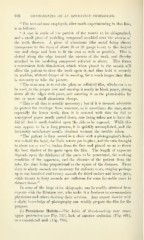Page 698 - My FlipBook
P. 698
696 ORTHODONTIA AS AN OPERATIVE PROCEDURE
" The method now employed, after much experimenting in that line,
is as follows :
" A cast is made of the portion of the mouth to be skiagraphed,
and a small piece of modeling compound moulded over the crowns of
the teeth thereon. A piece of aluminum (this metal being almost
transparent to the rays) of about 26 or 28 gauge is cut to the desired
size and shape and bent to fit the cast as well as possible. This is
slotted along the edge toward the crowns of the teeth, and thereby
attached to the modeling compound referred to above. This forms
a convenient little film-holder, which when placed in the mouth will
allow the patient to close the teeth upon it, and thus hold it securely
in position, without danger of its moving, for a much longer time than
is necessary to take the picture.
" The next step is to cut the plate or celluloid film, whichever is to
be used, to the proper size and envelop it neatly in black paper, gluing
down all the edges with paste, and securing it to the plate-holder by
two or more small aluminum clamps.
" This is all that is usually necessary ; but if it is deemed advisable
to protect the envelope from moisture, as is sometimes the case, more
especially for lower teeth, then it is covered with thin tin foil or
waterproof paper neatly pasted down, care being taken not to have the
foil (if that is used) doubled upon the side to be exposed. While this
may appear to be a long process, it is quickly accomplished, and the
invariably satisfactory results obtained warrant the trouble taken.
" The patient is then seated in a chair with a photographer's head-
rest to hold the head, the Tesla screen put in place, and the tube brought
to about ten or twelve inches from the face and placed so as to throw
the best shadow of the parts upon the film. The length of exposure
depends upon the thickness of the parts to be penetrated, the working
condition of the apparatus, and the distance of the patient from the
tube, the time being proportional to the square of the distance. From
sixty to ninety seconds are necessary for ordinary cases, ranging perhaps
up to one hundred and twenty seconds for third molars and heavy jaws,
while twenty to forty seconds are sufficient for some favorable cases in
thinner bones."
In some of the large cities skiagraphs can be readily obtained from
experts with the Rontgen ray, who make it a business to accommodate
physicians and others desiring their services. Any expert dentist with
a slight knowledge of photography can readily prepare the film for the
purpose.
(e) Pernicious Habits.—The habit of thumh-Huching may cause
upper protrusion (see Fig. 757), lack of anterior occlusion (Fig. 801),
or a constricted arch (Fig. 798).


